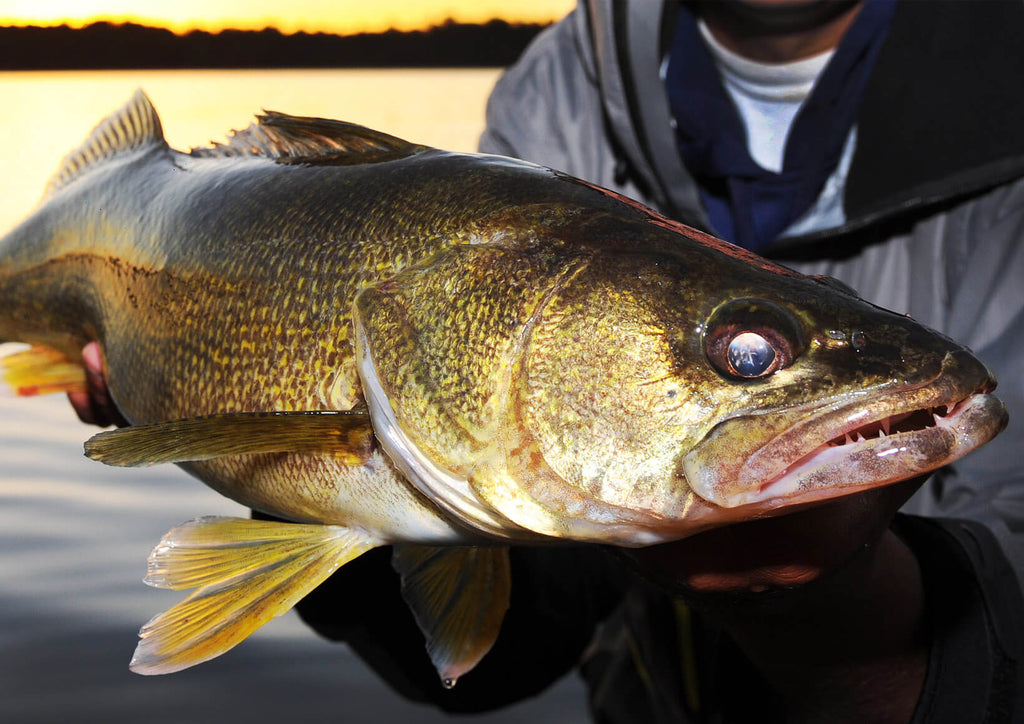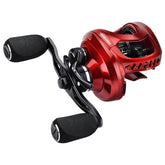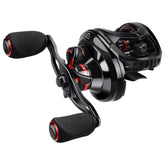
Blade Baits for Cold Water Walleye Fishing
For many people when they think of the cold months of late fall and a long winter they cannot help but think of deer hunting, ice fishing and a bad case of cabin fever. However, there is still good reason not to hang up the fishing rod and reel for the year. The highly sought after walleye bite can be pursued all throughout Fall and Winter. Although, many anglers when targeting cold water walleyes, they think of a slow, methodical jigging method that may or may not involve drowning minnows in the deepest hole of a river, lake or reservoir. One overlooked tactic is that of the utilization of blade baits. Fact is there are some rivers; especially those that are dam controlled, that do not freeze over during the winter. Blade baits are walleye catching machines because they seem to mimic a dying, winter stunned baitfish thus creating a reaction strike like a cat pouncing on a mouse.

Large winter walleye caught in Pennsylvania
Fishing On The Bottom
Many anglers are intimidated by snags due to their heavy metallic nature and its close bottom-contact presentation. One might think this is far too aggressive of a technique and it’s not going to catch fish that like a leech or nightcrawler dragged slowly on the bottom. Fact is, walleye will sometimes hit this bait so hard you will feel it on the other end of the line much like a pike or bass. Oftentimes you will just lift up your bait off the bottom when suddenly you will feel weight on the line with a fish on the other end. Statistically speaking from my own perspective fish will almost always hit on the fall.
Blade Bait Technique
Whether you want to rip it, pop it, slowly jig it or just reel the blade bait on a slow steady retrieve; all these techniques produce fish throughout just about any time of the year. Although, I personally like to more or less jig this lure with my rod at a 10 o’clock angle up to an 11 or 12:00 angle there are many times you will have to do some trial and error. In my opinion, I feel it’s best to start out with a more aggressive approach. On the first initial cooling of the water, I use a “snappy” or “pop” type of approach. As the water temps dip down to the lower 50s and lower 40s I will start to slow my presentation down. Sometimes I’ll even pause the bait for 1-3 seconds if I do not get any bites for a period of time. It’s important not to get in that “Road Stare” and change up and vary your technique. I have had several instances where walleyes will pick it up right off the bottom when I stopped to answer my cell phone or stopped to look at my watch. The same can be applied to increasing water temperature where a more aggressive retrieve with no pause at all can be applied.
Change Tactics For Late Winter and Early Spring
In late Winter and early Spring as the initial water temperature is on a steady rise the more aggressive approach may just be what gets you bit. In many instances it’s all about timing. It can be the time of year and or the time of day. I seem to have had many of my successes at “twilight” hours and within an hour before and after dark. That is when I feel these baits particularly shine. Nevertheless, blade baits will work in the daytime, too.

Color and Types of Blade Baits to Match the Hatch
As previously mentioned, the blade bait is a reaction style bait. However, there are some different situations where you can utilize color and weight for different situations such as a highly pressured water body or unfavorable conditions. The phrase “Match the Hatch” comes to mind wherever a predatory instinct is prevalent. This applies to walleye fishing as well. I like to use an orange and green color(aka Firetiger) to imitate Yellow Perch or a silver color which mimics gizzard shad. In low light and overcast conditions I even use a gold color which seems to be more visible in comparison to a silver which may also imitate a golden shiner. It’s always good to have several colors to replicate Walleye forage and even more advantageous to have multiple rod combos with different sizes or colors tied on.

(From Left to right—Rapala Snap Jig, Johnson ThinFisher, Heddon Sonar, Silver Buddy, Nick Canestra Custom Blade, Vibe Blade Bait)
Fishing Tackle
In addition to having multiple baits tied on, I personally like to have 2-3 setups on me at all times. Moreover I am highly partial to the KastKing WideEye Walleye Rod with a 2000 size reel. The Zephyr Line of spinning reels are a good match and the Sharky III line of spinning reels is a flagship reel. I usually have one spooled with 10 pound monofilament, another spooled with straight 8 or 10 pound fluorocarbon and another spooled with KastKing 10 pound Finesse Braid Line tied to a 8 or 10 pound fluorocarbon leader. This particular setup will help to make longer casts with lighter baits as well as offer more of a stealth approach in clearer water. The WideEye Walleye fishing rods are superior because of their iM9 rod blank and the various technique specific models they offer; as many as 13 different lengths and actions.

Conclusion
In conclusion, it’s best to reiterate that blade baits work exceptionally well in cold water. For colder water it is important to keep your cadence short and pause longer between lifts. As water warms, you can use a more aggressive technique and try quick “pops” to get Walleye to react. It’s good to have multiple rods so you can fish different baits and color patterns as well as a different technique depending on your rod type. (E.g. Fast Action Rod for slower fall). It’s important to be aggressive and stay adamant much like Bass fishing and not be afraid to try something different or new.
 Chris McVey is a multi-species angler who lives in Pennsylvania. He is a KastKing Brand Ambassador.
Chris McVey is a multi-species angler who lives in Pennsylvania. He is a KastKing Brand Ambassador.












